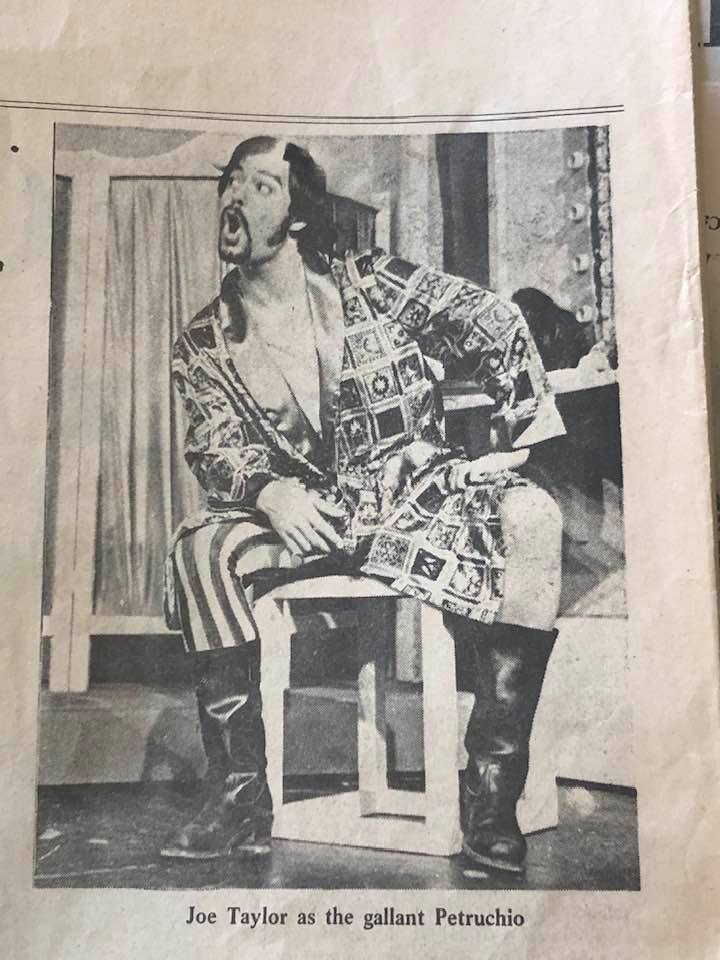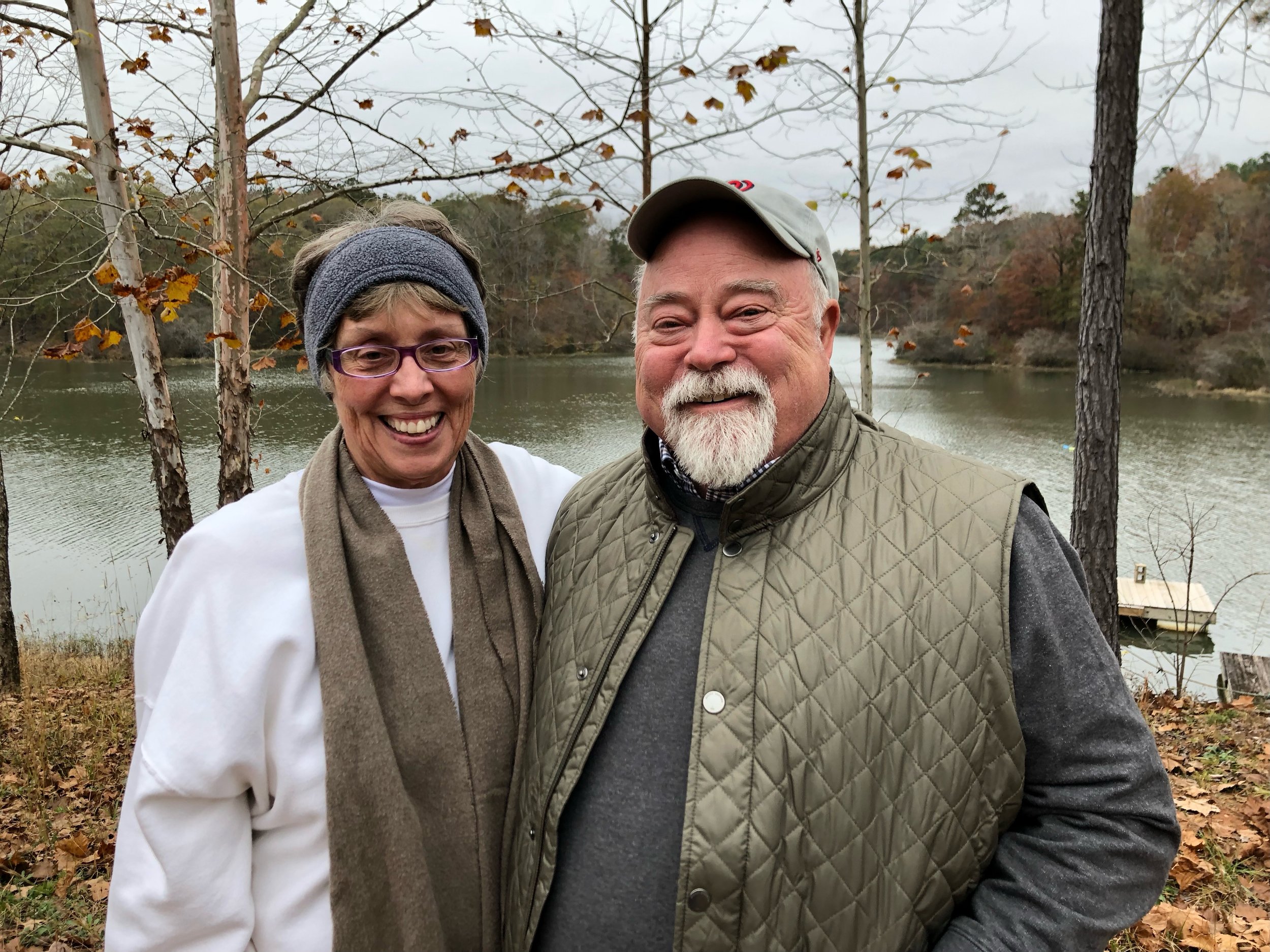“The past is gone…” But, is it?
Lady Isabelle and Francis Levison in the 1982 Samford production of East Lynne
Blog 62
“The past is gone, and cannot be recalled. We have both played our cards like simpletons. If ever two beings were formed to love each other, you and I were. I sometimes thought you read my feelings.”
Sir Francis Levison in Mrs. Henry Wood’s East Lynne
“The past is gone…” Yesterday (October 14) commemorated the date that the first known play was presented in Birmingham. Mrs. Henry Wood’s East Lynne has that distinction — and the melodrama was performed in Sublett Hall, a public meeting space and playhouse located at 2011½ & 2013½ 2nd Avenue North in Birmingham. On a map, it looks to be in the spot that is now the Bromberg’s downtown location, but I might be wrong.
Sublett had 417 seats, and was converted to a theatre in 1872 by Frank O’Brien, who leased the space over a mercantile store. He hired a cabinet maker, Edward Erswell, to build the stage and O’Brien himself painted the scenery. Major Joseph M. Sublett of Mississippi backed the project, so the hall was named for him. In its early years, the room served multiple purposes beyond theatre, housing community meetings, church gatherings, and conventions (for example, the Alabama Press Association used the place in 1874). Sublett Hall continued as the Magic City’s main venue until the 1881‑1882 season, when O’Brien’s Opera House opened.
But, this past can be recalled: the night of October 14, 1872 bustled with excitement with the debut performances at Sublett Hall. The occasion featured a double bill of East Lynne and Everybody’s Wife. I have been involved in East Lynne twice and the performance lasts at least two and a half hours. Everybody’s Wife seems to run about two hours. With 7:30 p.m. being a common curtain time in the 1800s, people watching the dramas probably saw midnight before they started home, by walking or in horse-drawn carriages.
East Lynne was a very popular Victorian sentimental novel by Mrs. Henry Wood, which saw many stage adaptations. The fact that East Lynne was chosen as the debuting play for Sublett suggests a taste for dramatic, serious melodrama in nascent Birmingham audiences from the very start of its theatrical culture.
Ninety-seven years later, to open the season in my Sophomore year at the University of Montevallo, we produced a delightful rendition of East Lynne. The melodrama was directed by a true character of the professorial ranks, Mr. W.T. Chichester. Between major scenes, olio acts were performed: diverse entertainment, such as popular musical numbers from bygone days (like “Glow, Little Glow Worm”), and short theatrical performances.
Joe as Petruchio the University of Virginia
The villain, Sir Francis Levison, was played by my good friend, Joe Taylor. In old-fashioned melodramas, this scoundrel is purely evil — immoral, corrupt, and powerful — though ultimately failing to defeat the hero. Joe was instructed by Mr. Chi to perform exaggerated behaviors like mustache-twisting, leering, cackling, and hand-rubbing. Such dramatic physical actions externalized the rogue’s emotions to outwardly display his wickedness. And he would often twirl his red-lined cape with wicked delight, and roll his Rs quite nicely. (The photo left is of Joe around this time period in a play he performed in graduate school.)
Joe was a bit of a mysterious force on campus. A number of girls had a crush on him, and I imagine some guys did, too. We only overlapped two years, because he was already a Junior my Freshman year. “If ever two beings were formed to love each other…” In those two years, we became soul mates and have stayed close over the years despite the fact he lives in Maryland near DC and is married to a wonderful man named Siegie.
Even as life moved us in different directions, the theatre remained a shared language — one that continued to shape my journey and his long after those college days. Even now, thinking of Joe and Siegie reminds me how deeply woven love, friendship, and art have always been in our mutual life. Those bonds — emotional and creative — carried me through many seasons, and life changes, including the one that took me to Samford, beyond, and back again.
During the 25 years I taught at Samford, my design partner and I left briefly for a nearby university. But when I returned to my old Samford costume shop, I really began striving to create authentic pieces for the period plays we did. My mother was a lovely seamstress and constructed a number of my mini dresses when I was in high school and college. My great-grandmother, grandmother, and Aunt Marge were also extraordinarily creative with fabric, thread, and various kinds of handwork.
Despite this lineage, I had never thought of myself as a very good seamstress, at least not as good as my female relatives; but after spending 26 years in a costume shop, I got fairly decent at the job. One of my favorite shows to ever costume was East Lynne, the old play from college days, and Birmingham’s first dip into theatre. We staged the show at Samford in the fall of 1982 upon my return to the school. I was so happy to be back in my old costume shop, I became totally absorbed in the work, fabricating — with my students — bustles, corsets, and silky draped gowns.
In that season of return — to Samford, to East Lynne, to the hum of those sewing machines and the scent of that fabric — I felt the presence of my mother, my grandmother, my great-grandmother, and my aunt in every stitch. What began as their gift to me, over time, became my own offering to the stage.
In that little shop, surrounded by thread and memory, I understood that I wasn’t just building costumes — I was continuing a legacy of care, creativity, and love. And since it was a show I had earlier shared with Joe, the experience was also tinged with the thrill of that theatrical and emotional interlacing. “I sometimes thought you read my feelings.” What a special production!
2018 photo of Joe and the author



